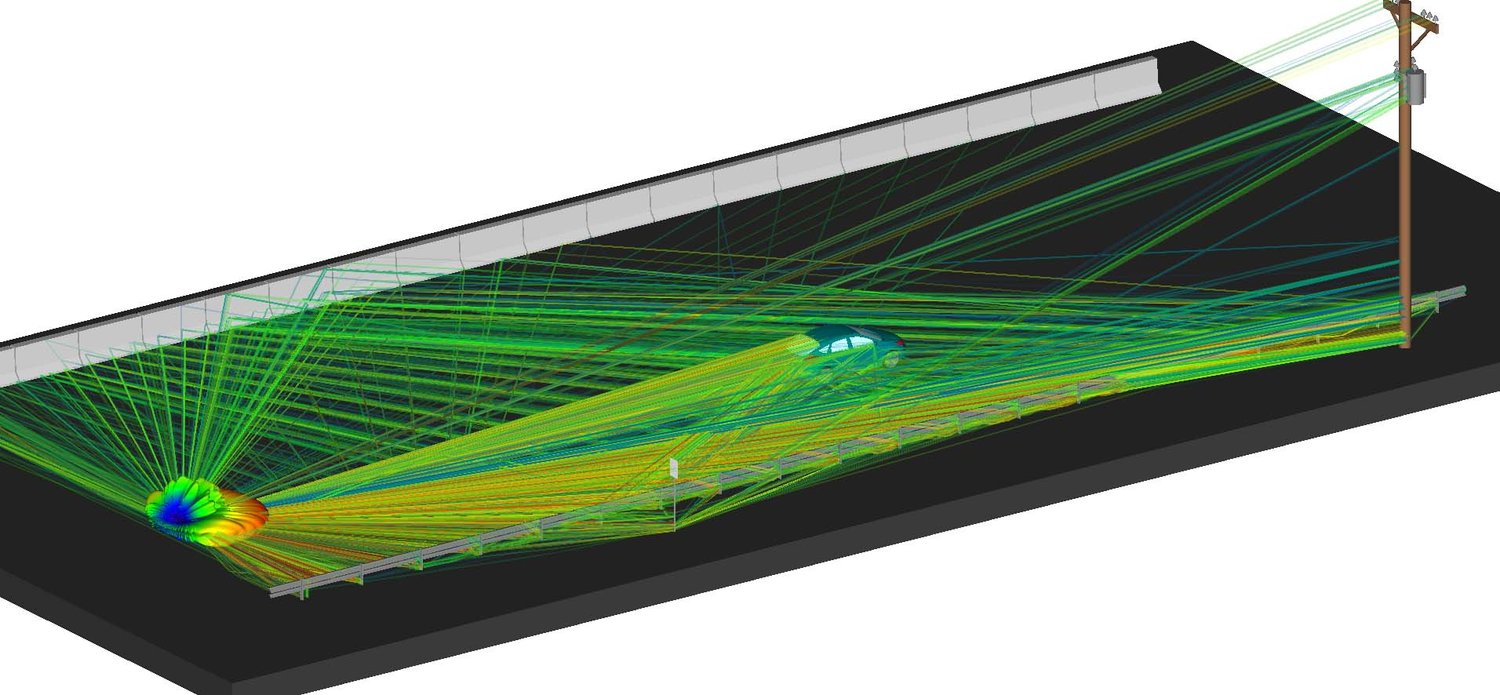Ray-Tracing With Physical Optics And MEC
Physical Optics (PO) is a ray-based physics technique that is very effective for radar scattering and other applications that require calculation of backscatter from detailed faceted objects.
Unlike methods based on the GO/UTD approach, PO involves a full surface integration over faceted structures. This requires denser ray tracing and is more computationally intensive than geometric optics and UTD; however, the additional computation can provide much more accuracy for calculations that require analysis of scattering from faceted structures that are highly detailed, such as the calculation of radar backscatter from a finely-faceted model of a vehicle, aircraft, or naval vessel, or reflections from other high-resolution surfaces. Traditional approaches often make far-field assumptions and are applied to problems such as the calculation of far-field RCS. In Remcom’s WaveFarer® radar analysis software, however, the technique has been specifically enhanced to account for near-field effects, allowing the method to be applied to closer-range applications such as automotive radar or indoor sensing.

Method of Equivalent Currents (MEC)
While physical optics does include the effects of edges in its scattering calculations, these effects can be further improved through corrections based on techniques such as the Method of Equivalent Currents (MEC). Remcom’s solutions have applied MEC to find equivalent electric and magnetic currents associated with each edge, which are then included in line integrals to supplement the PO surface integral. The result produces a better numerical approximation for near-zone or far-zone scattered fields than surface PO alone.
